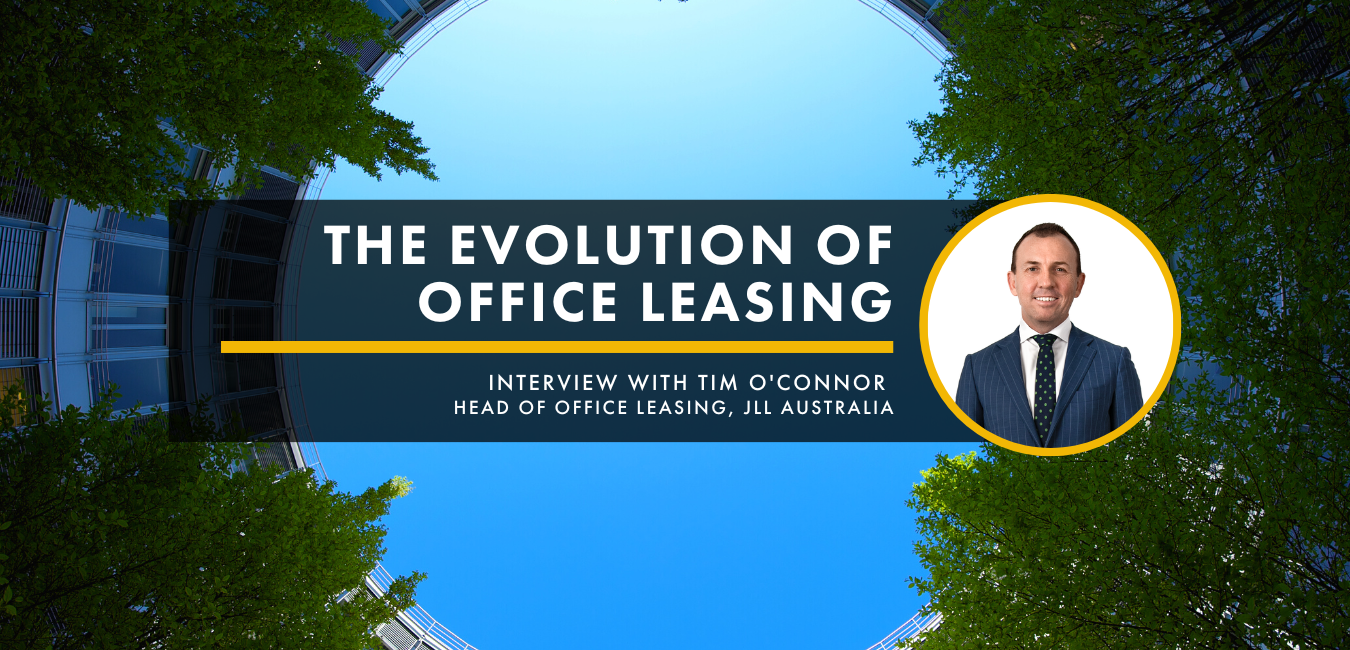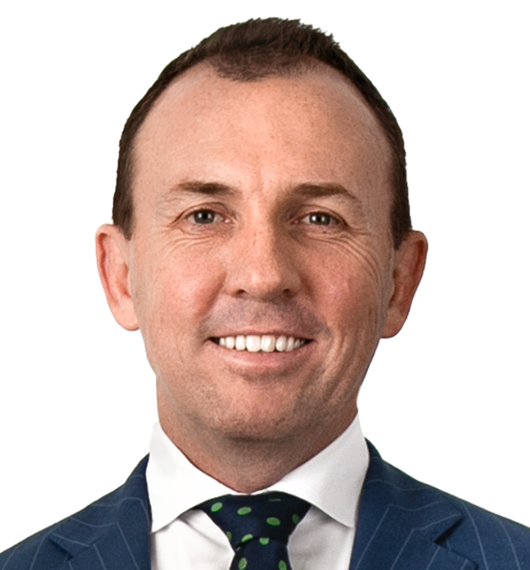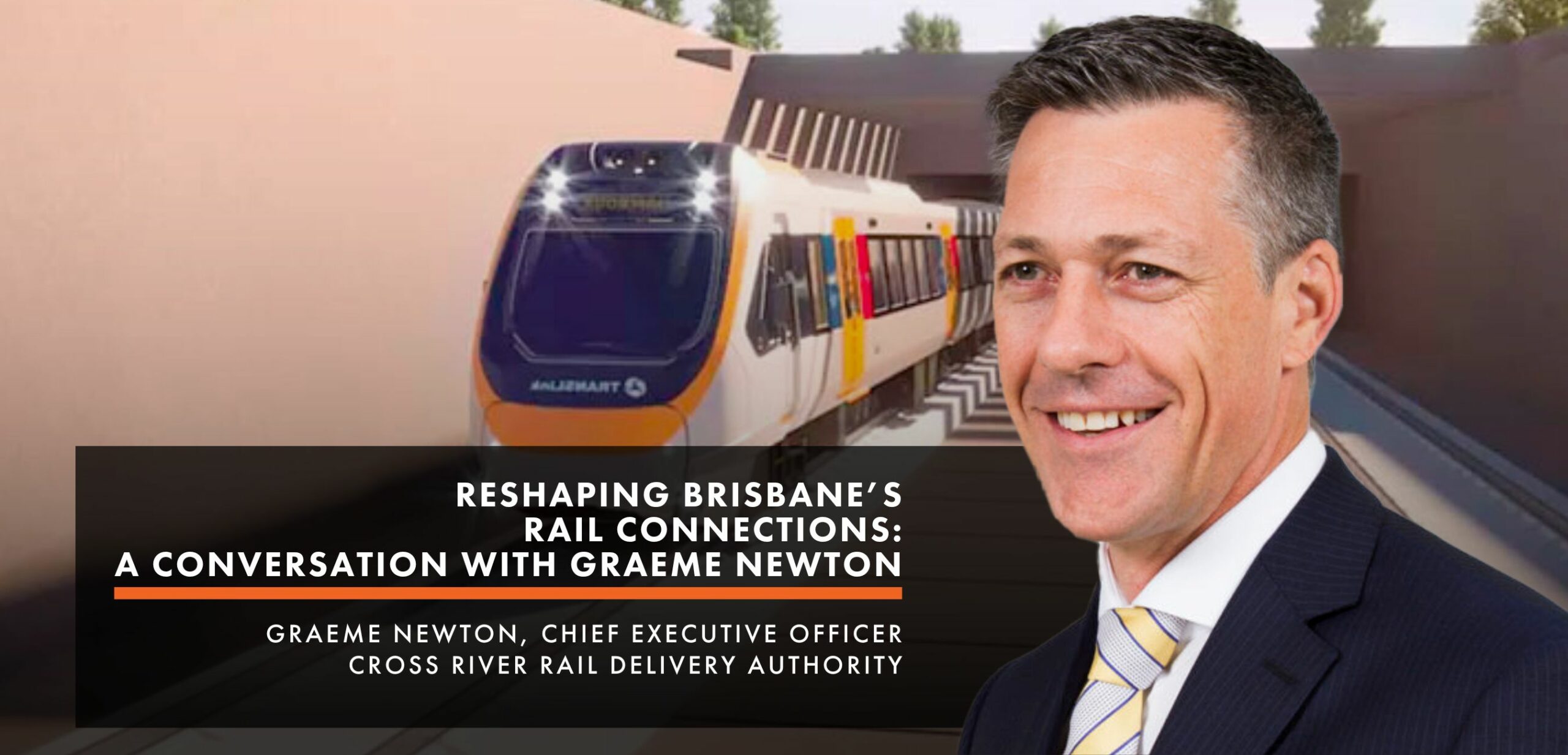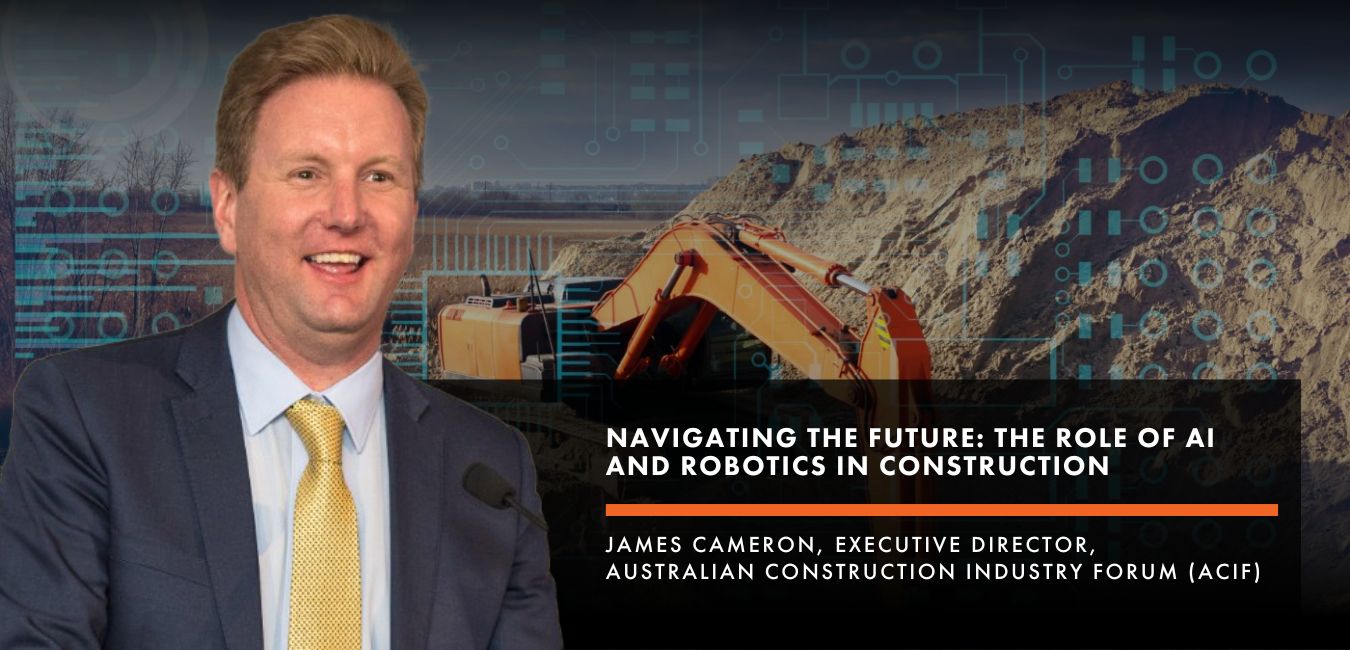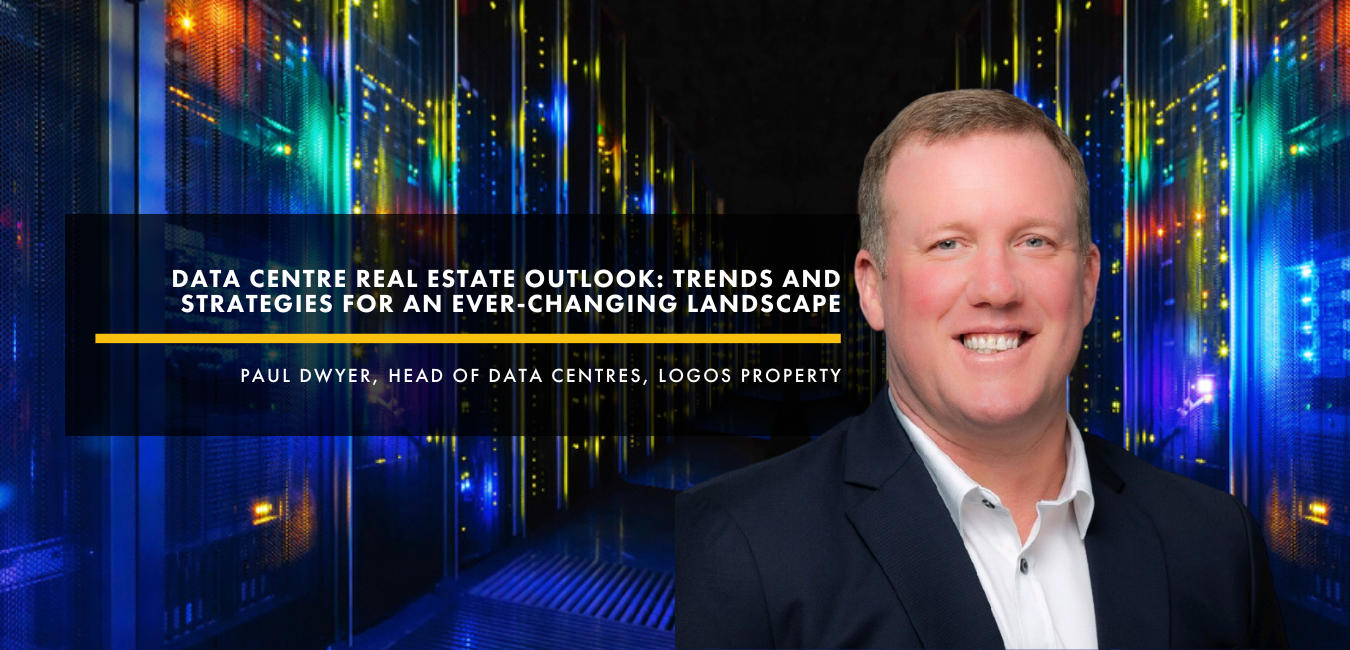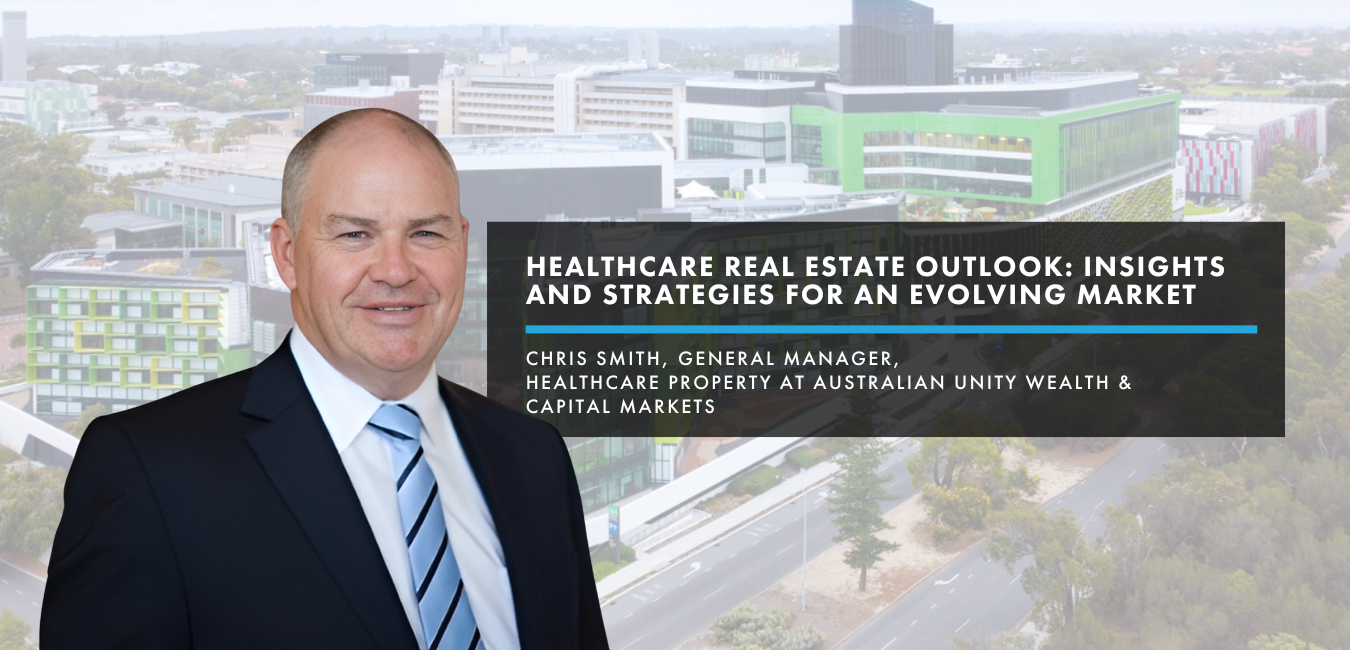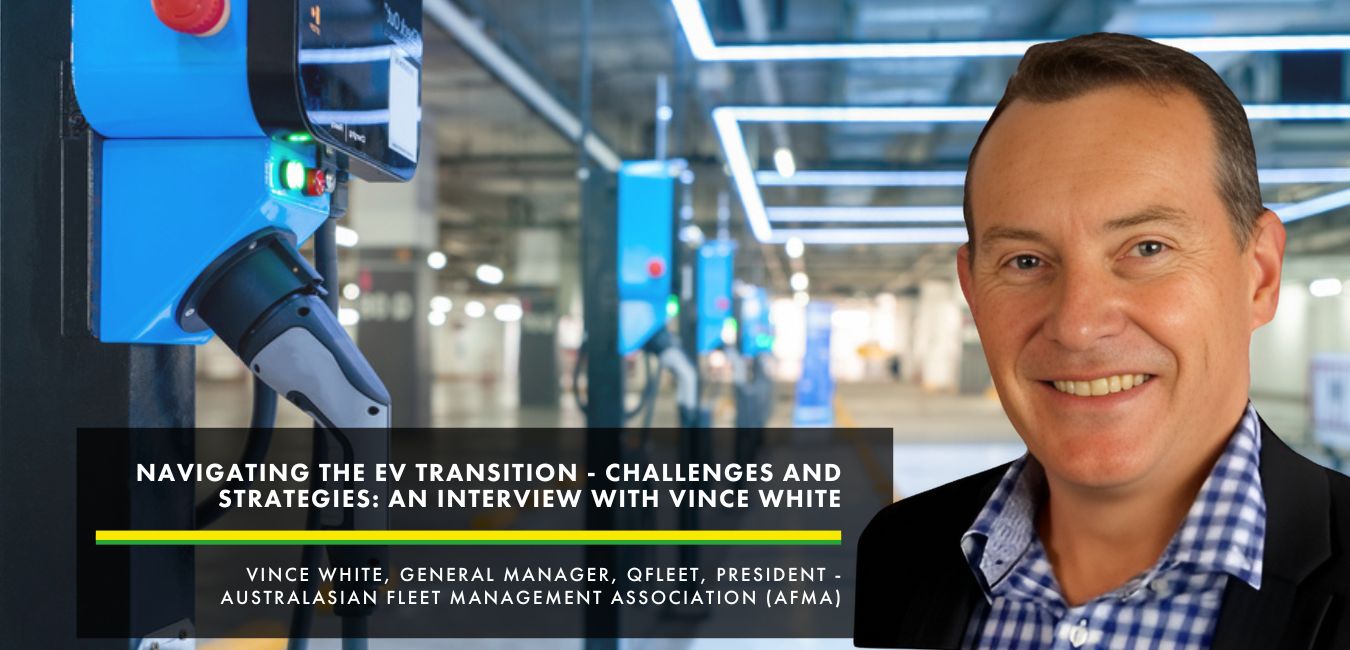FuturePlace Interview Spotlight, Tim O’Connor.
We recently sat down with Tim O’Connor, Head of Office Leasing for JLL Australia, to delve into the evolving landscape of Office Leasing. We talked about amplified trends, collaboration between tenants and landlords, ESG, Health & Wellness, and Flexibility. It was an insightful chat as you can see below.
FuturePlace: Hi Tim, can you tell us about your role at JLL?
Tim: I head up our office leasing business in Australia, working with our teams based in the six major cities. We have around 70 professionals who work with and support our landlord and investor clients with leasing and re-leasing office space and also work on new developments and new product that they’re looking to bring to market.
FP: Considering the past few years we’ve had, what are some of the challenges and opportunities office leasing executives are facing?
Tim: That depends on which of those years you’re talking about. 2020 was tough for everyone and most of the focus went on trying to figure out what the way forward would look like. But over the last two years, we’ve seen much greater levels of activity. I think the biggest challenge continues to be around understanding the dynamics of occupiers and what they’re looking for and the flipside of this, advising our investor clients on how to satisfy those requirements.
A common challenge in the last two years was that there were so many unknowns. As time marches on, the way organisations want to work has become clearer. Another challenge has been understanding exactly what people and organisations are looking to achieve through their workplace and then as a follow on, how best to support that, particularly in existing client owned assets around adapting some of those buildings to meet the changing requirements.
FP: How has the relationship between commercial tenants and asset owners changed in the last 12 months?
Tim: We are seeing a lot more collaboration going on at the moment driven by changing needs, some but not all as a direct response to COVID. Many occupiers are looking for greater flexibility, be it through their lease structure, or flexibility that can be afforded by a flex operator or operated by the landlord or a third party within that building. New conversations are emerging between tenant and landlord as to how that flexibility can be achieved.
Take for example; landlords are now considering if they should introduce and operate their own flex-run solution for occupiers to take advantage of. Sustainability and the push to Net Zero have been amplified over the last couple of years and these challenges have also increased conversations and collaboration between both parties.
There will continue to be a lot more conversations that have to happen between Tenant and Landlord as the issues can’t be resolved by either party alone, leading to a more holistic and collaborative partnership.
We are seeing a growing trend around health and wellbeing and a much greater appetite for amenities and offerings that benefit employee wellbeing, an example being how the air conditioning system works and air quality. But this can also translate into the physical environment and creating experiential areas beyond just your traditional end of trip facilities such as the shower, locker and changeroom facilities. Organisations want to provide their staff with wellbeing facilities within the building, whether it be Yoga, Pilates, those sorts of things. We’re seeing major landlords looking at wellbeing more holistically, with practitioners including physios, naturopaths, dieticians, mindset coaches all integrated into one wellness offering.
Now more than ever, there’s a broader range of requirements that organisations are looking to their real estate to fulfill. The challenge for landlords is to understand what those real priorities are and how they can best then accommodate some of those requirements.
“occupiers are now starting to look at an office building in a similar way you would look at a hotel”
FP: How have the demands of these 2 parties evolved since the pandemic?
Tim: Some of these demands were happening pre pandemic such as flexibility and the co-working phenomenon. Organisations are wanting their real estate to do and be more. Businesses are working in a more hybrid way now too.
In existing buildings, the opportunity to provide and satisfy some of those demands, particularly around health and wellbeing, can be more challenging in the short term. It’s always easier, arguably, with a new development where you’re designing those facilities and amenities from the start. But I think we’re seeing a lot of existing assets having to adapt and they’re adapting quite successfully.
The most noticeable change overall has been occupiers are now starting to look at an office building in a similar way you would look at a hotel. Occupiers are looking to capitalise on the ‘Hotelification’ trend to attract and retain staff. Re-imagined office buildings can provide the F&B, meeting spaces, flexible work areas, health and wellbeing offerings that can be used as they need, rather than having to provide these offerings within the core office space.
Sustainability has emerged as a key driver in recent years, and that really comes back to organisations making commitments at a corporate level around timeframes to achieve net zero carbon. Occupiers are pondering how to work with the landlord to ensure they are giving themselves the best opportunity to achieve these commitments.
FP: How important of a factor is ESG when it comes to office requirements?
Tim: Enormous, and in some ways, we have been surprised how quickly it’s moved up the decision-making criteria. I’m not saying it hasn’t been previously important because it has been. I think the line in the sand that organisations have now drawn, has really solidified decision making from an ESG stand point: it’s not just the environmental or social component to it now, governance matters too.
Occupiers want to understand what their landlord stands for and how the landlord is ensuring that they are socially responsible, such as giving back to the community. Occupiers want to know about what initiatives landlords have in place. Governance plays into reputation and the responsibility from the owners’ point of view to be able to operate the building to the standard occupiers are expecting.
FP: How is JLL leveraging technology to remove friction from the commercial leasing process?
Tim: During the pandemic, it was really obvious that we needed to embrace digital opportunities to enable us to continually market properties and communicate existing opportunities to occupiers. That didn’t go away when lockdowns finished. We’re very mindful that in many respects, occupiers have decision makers based elsewhere in Australia or overseas. Being technologically able to really articulate the opportunity in an existing asset digitally or in a building that doesn’t exist yet is a game-changer.
We work alongside many partners. We’ve also got our own mapping technology that is really important in being able to demonstrate future supply with potential occupiers and to showcase how we see cities changing.
We work in a very people-based industry, and it is really important that we’re giving our people the right technology to be able to communicate ideas clearly in face-to-face contact, particularly with things that don’t exist like high quality renders and fly throughs, but probably even more so when people are based elsewhere. We continue to look at opportunities to improve from an operations perspective as well.
Technology has been a key part of the investment that we’ve made at an operator level through the quality of our database and certainly from a market facing point of view.
FP: How has your relationship with Flex work operators changed in the last 12 months?
Tim: I don’t think you’d say our relationship has changed; I think the landscape has changed.
Obviously, over the last few years we’ve seen a significant number of organisations enter that market. I think the biggest thing is working with our investor client base to understand exactly what they want for their particular asset, whether it is a third-party operator or it’s something that’s curated by the landlord themselves. There has been movement in the way that we’re working with those third parties, and our landlords to provide that flex solution. I think the way that tenants are looking at it now is a lot different because we have seen all industry types now embrace flex within assets.
There were some who were a little reluctant from a privacy and security point of view previously, but as long as those aspects can be satisfied and solved, I think virtually all organisations see the benefit of what flex can bring from short term project requirements to overflow space, to the additional amenity such as auditorium or larger meeting rooms that they can utilise, which might not be used by their organisation very regularly. They would much rather not pay for this day in day out when it’s not been used. That is much more appealing than having the amenity imbedded within their own office footprint.
“I think organisations will look at their existing space and think: Is this doing what we need it to do?“
FP: Looking ahead, what are your predictions for the office market in 6 to 12 months’ time?
Tim: I think we’ll see organisations ensure that their office space is doing exactly what they need it to do, which comes back to the attraction and retention of the best quality people. The trend was evident pre-pandemic, but I think it’s been accelerated. Now it is about how you attract and retain Talent.
I think organisations will look at their existing space and think: Is this doing what we need it to do? And if it’s not, then they’ll look at adapting it. In some situations, we will see tenants refit their existing space. But I think we’ll continue to see, as we saw last year, a significant number of tenants take the opportunity to upgrade into better quality buildings. Better from a sustainability, flex, and health and wellbeing point of view.
Some of the key trends we’ve talked about would drive some of that demand. It doesn’t always mean moving into new buildings, there’s several older buildings around the country that have adapted well. It’s not always about new.
However, it’s certainly about those buildings that are providing what occupiers need. Similarly, to last year, I think organisations will clearly be watching what’s going on globally from an economic perspective but want to make sure that the work environment they’re providing for their staff, and those staff that they’re wanting to attract, is doing what it needs to do. So, I think that flight to quality trend will continue.
Future of Office Space Summit
JLL is proudly sponsoring the 3rd annual Future of Office Space Summit, taking place on 22nd March 2023. It will bring together the brightest minds in the industry to explore all the big questions, analyse the data, hear about the latest solutions and find the partners they need to deliver the most attractive workspace options to tenants.

